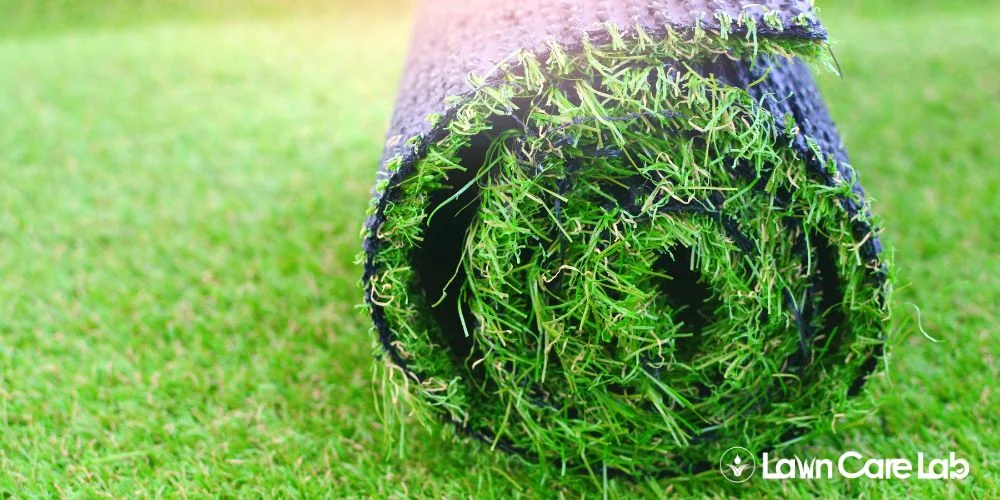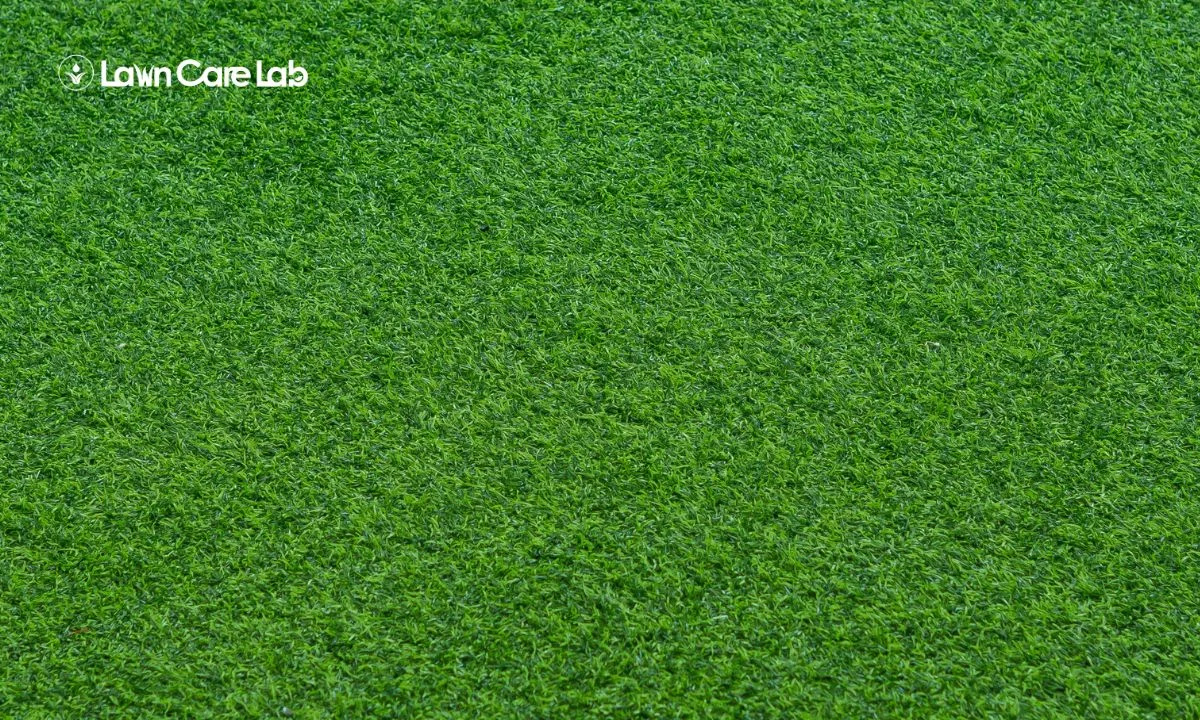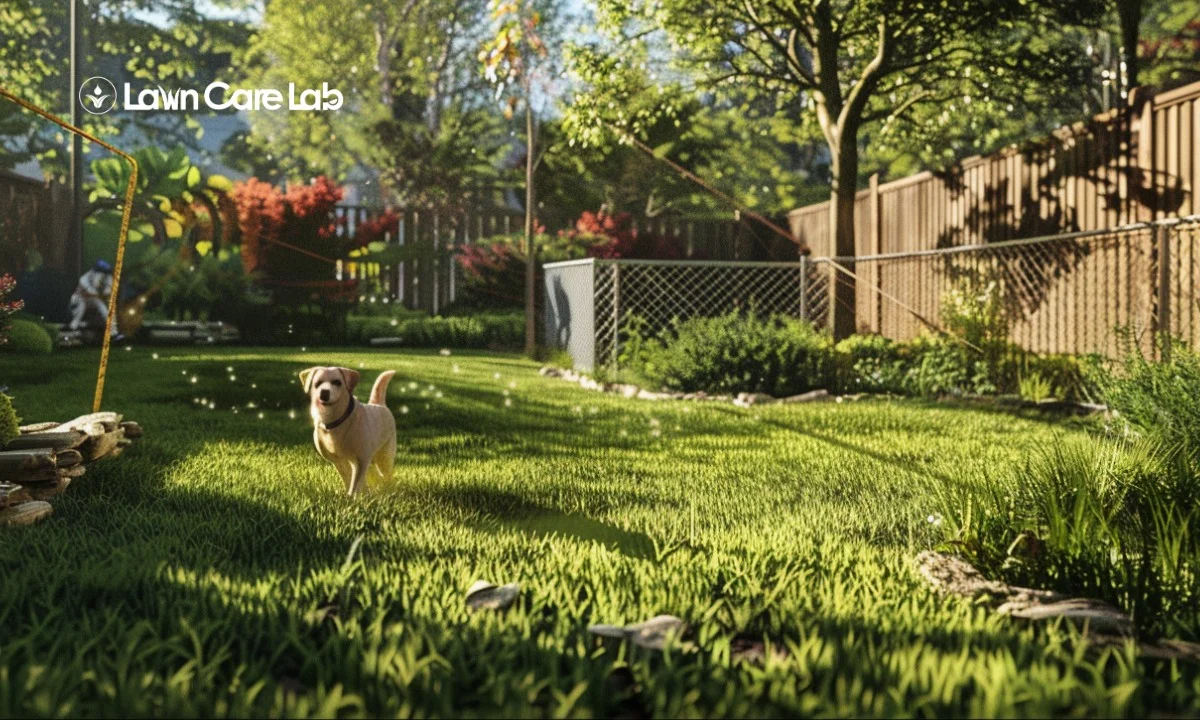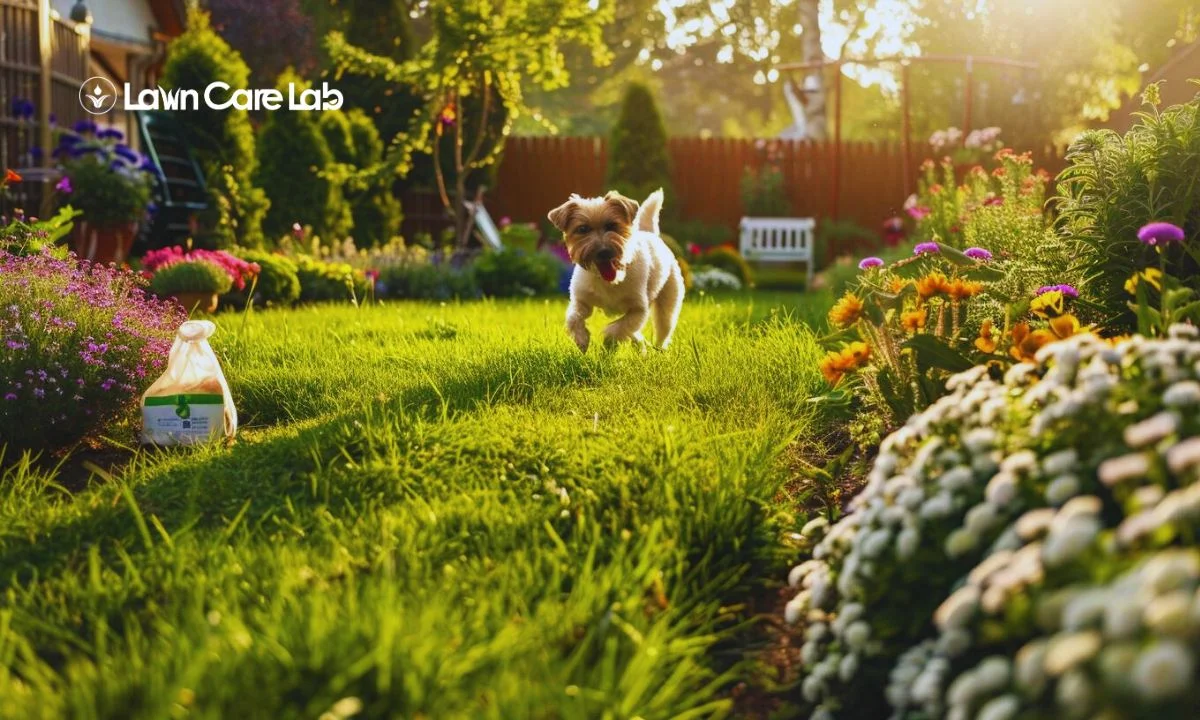Transforming your backyard into a green paradise requires a solid understanding of the best grass types suitable for your lawn.
The right grass can make all the difference, giving your yard a vibrant, healthy appearance while serving a functional purpose.
This article will unveil the seven best grass types that’ll transform your yard into the lush green paradise you’ve been dreaming of. Whether you’re a gardening guru or a novice with a trowel, we’ve got something for everyone.
Table of Contents
Best Grass Types for a Healthy Lawn

1. Kentucky Bluegrass
Kentucky Bluegrass might be your ticket to the lawn of your dreams after a cool grass season with a lush blue-green color and fine texture. Despite requiring more water and maintenance, don’t get spooked by its high-maintenance tag!
| Feature | Details |
|---|---|
| Climate Compatibility | Cool season grass, ideal for northern regions. |
| Sun Tolerance | Performs well in full sun to partial shade. |
| Mowing Requirements | Weekly mowing needed, medium blade type. |
| Wear Tolerance | Moderate wear tolerance. |
| Recovery Ability | Good recovery ability. |
| Color and Texture | Blue-green color, fine to medium texture. |
| Maintenance Needs | Moderate maintenance needs. |
| Soil Adaptability | Thrives in various soil types. |
| Blends | Ryegrass, tall fescue. |
Kentucky Bluegrass isn’t just any grass—it’s an innovative choice for the discerning lawn enthusiast!
2. Bermudagrass
Ready to embrace a tough, no-nonsense approach to your green scape? Bermudagrass could be the hardy champion you’re looking for.
This warm-season grass takes aggressiveness to a new level with its rapid spread by stolons and rhizomes. It’s like the Hulk of lawns – it easily withstands heat, drought, and foot traffic.
Bermudagrass maintenance isn’t for the faint-hearted, though – this turf means business.
| Feature | Details |
|---|---|
| Climate Compatibility | Full sun lover tolerates heat well. |
| Sun Tolerance | Warm-season grass thrives in southern regions. |
| Mowing Requirements | Aggressive spreaders, high recovery rate. |
| Wear Tolerance | Warm-season grass thrives in southern regions. |
| Recovery Ability | Aggressive spreaders, a high recovery rate. |
| Color and Texture | Infrequent mowing is needed. |
| Maintenance Needs | Moderate maintenance needs. |
| Soil Adaptability | Thrives in various soils. |
| Blends | Zoysia, buffalograss. |
3. Perennial Ryegrass
Looking for a cool season champ that pops up quickly and delivers a stunning, fine-bladed green carpet? Perennial Ryegrass might just be your ticket.
But watch out! It’s not all fun under the sun with this guy.
Ryegrass Maintenance can be a bit of an ego trip: it loves basking in its own glory but crumbles under heat or humidity.
| Feature | Details |
|---|---|
| Climate Compatibility | Cool season grass, suitable for northern areas. |
| Sun Tolerance | Tolerates partial shade but prefers full sun. |
| Mowing Requirements | Frequent mowing is needed, and a bunch of growth habit. |
| Wear Tolerance | Poor wear tolerance. |
| Recovery Ability | Quick recovery but less durable. |
| Color and Texture | Deep green, fine leaf texture. |
| Maintenance Needs | Moderate maintenance needs. |
| Soil Adaptability | Thrives in fertile soils. |
| Frequent mowing is needed, and bunch growth habit | Frequent mowing is needed, and a bunch of growth habits. |
So there you have it – one step closer to achieving that dream lawn!
4. St Augustine Grass
St. Augustine, a warm-season superstar that’s tough as nails and oh-so-stylish with its broad, coarse leaf blades.
This grass type is like the ultimate party guest; it can withstand heat, resists wear, tolerates salt, and even has disease resistance built into its DNA.
However, don’t be deceived by its robust nature. St Augustine maintenance requires a keen eye on those cold injuries and shade issues. It’s not exactly a fan of the chill or shadowy corners!
| Feature | Details |
|---|---|
| Climate Compatibility | Warm season grass, ideal for southern lawns. |
| Sun Tolerance | Tolerates full sun but also partial shade. |
| Mowing Requirements | Medium mowing frequency. |
| Wear Tolerance | Moderate wear tolerance. |
| Recovery Ability | Slow growing, moderately durable. |
| Color and Texture | Blue-green color, coarse texture. |
| Maintenance Needs | Moderate maintenance needs. |
| Soil Adaptability | Thrives in various soils. |
| Blends | Bermudagrass, zoysiagrass. |
So if you’re dreaming of an innovative lawn that doubles as your personal catwalk for fashion-forward grass types, consider St Augustine Grass.
5. Tall Fescue
Tall Fescue is a contender for those seeking resilience and easy maintenance. It’s like the heavyweight champion of lawn grasses; it can take a punch and keep standing.
If you’re wondering about fescue maintenance tips or the ideal fescue watering schedule, here’s the scoop: this grass doesn’t need coddling. A bit more water in summer when it’s hot? Sure! But overall, less is more with this grass type.
| Feature | Details |
|---|---|
| Climate Compatibility | Cool-season grass grows well across northern regions. |
| Sun Tolerance | Performs well in full sun and partial shade. |
| Mowing Requirements | Weekly mowing recommended. |
| Wear Tolerance | Excellent wear tolerance. |
| Recovery Ability | Weekly mowing is recommended. |
| Color and Texture | Green to dark green, clumping growth habit. |
| Maintenance Needs | Weekly mowing is recommended. |
| Soil Adaptability | Thrives in various soils. |
| Blends | Kentucky bluegrass, perennial ryegrass. |
6. Zoysiagrass
Zoysiagrass benefits include its dense coverage that doesn’t give weeds a chance! Despite being a bit of a diva when it comes to watering needs – think of your lawn as the supermodel that needs her Evian spray – the beauty of this grass is worth every drop.
Don’t dismiss Zoysiagrass just because it’s a slow grower; this warm-season grass has a toughness in spades, tolerating heat, drought, and foot traffic like a champ.
| Feature | Details |
|---|---|
| Climate Compatibility | Warm season grass, suitable for southern lawns. |
| Sun Tolerance | Prefers full sun. |
| Mowing Requirements | Infrequent mowing is needed. |
| Wear Tolerance | Excellent wear tolerance. |
| Recovery Ability | Slow spreader, durable once established. |
| Color and Texture | Dark green, fine to medium texture. |
| Maintenance Needs | Low maintenance needs. |
| Soil Adaptability | Thrives in various soils. |
| Blends | Infrequent mowing is needed. |
7. Buffalograss
Buffalograss, with its fine texture and gray-green hue, allows your outdoor space to mimic the serene beauty of a windswept prairie. This native warm-season grass is like the zen master of lawns, always keeping cool even under extreme drought conditions.
| Feature | Details |
|---|---|
| Climate Compatibility | Warm season grass, ideal for central to southern regions |
| Sun Tolerance | Thrives in full sun |
| Mowing Requirements | Very infrequent mowing |
| Wear Tolerance | Moderate wear tolerance |
| Recovery Ability | Slow spreader but durable |
| Color and Texture | Light to grayish green, fine texture |
| Maintenance Needs | Low maintenance needs |
| Soil Adaptability | Thrives in various soils |
| Blends | Zoysia, bermudagrass |
Buffalograss might catch some diseases now and then. But hey, who doesn’t? A little TLC goes a long way in keeping it healthy. So go ahead, let Buffalograss be the unsung hero of your dream lawn!
How to Plant Grass Seed on Existing Lawn
Planting seeds isn’t rocket science, but it does require some elbow grease and a sprinkling of humor.
Your choice should match your season and climate. Remember – spreading the seed evenly is as crucial as an even spread of butter on toast!
Soil preparation methods are like pre-drinks before a big night out. Dethatch and aerate that bad boy, ensuring each precious seed contacts the soil.
| Steps | Tips |
|---|---|
| Seed | Match to season/climate; Spread evenly |
| Soil | Dethatch/aerate; Dress with compost |
Watering frequency tips are next on tap – literally! Keep the seeds moist by watering lightly several times daily. It’s just like keeping your houseplant alive, but trust us, it’s easier.
Letting new grass grow 2-3 inches before its first haircut is key for full establishment.
Give it 4-6 weeks to settle in before heavy use – patience is not just a virtue here but an absolute necessity!
Remember: overseed thin areas in fall or spring to maintain thickness because nobody likes patchy lawns!
How to cut grass Without a Lawn Mower
Let’s dive into some creative ways to trim your green carpet without the help of a lawn mower. If you’re feeling bold and experimental, you might just find these manual grass-cutting methods strangely satisfying.
- String Trimmer: A heavy-duty string trimmer can be your best friend for those tight corners and small patches. Adjust it to the lowest setting and take it slow – this isn’t a race.
- Scythe: Now let’s delve into some scythe usage techniques that would make even the Grim Reaper proud. Sharpen that blade, keep it close to the ground, and slice through that grass like slicing through butter on a hot day.
- Sickle: Nothing says ‘I mean business’ like wielding a crescent-shaped blade hand tool! Swing at the base of the grass with all your might, though beware – large areas might require some serious stamina!
- Shears: Long-handled shears are perfect for spot trimming or showing off those biceps! But remember, grass-shearing tools can be tiring when dealing with larger patches.
Remember: innovation doesn’t always mean high-tech solutions; sometimes, it means going old school or getting downright farmyard fresh!
How to Remove Dead Grass from Lawn
So, you’ve got some dead patches in your yard, wondering how to bring it back to life? No worries. We have a quirky and innovative solution for you.
First off, grab that stiff-tined rake lying around in your garage. Using our advanced ‘ dethatching techniques, you’ll need it to give your lawn the comb-over of its life. Imagine yourself as a hair stylist for grass, raking over several times from different angles until every blade gets attention.
Now let’s move on to the real deal – aerating. This is where we pull plugs of soil up like tiny earthworms surfacing after rainfall. It’s fun and allows organic material breakdown faster than an eco-activist can say ‘compost.’
Speaking of composting, next comes top dressing with composted dead grass itself – talk about recycling! Organic remedies aren’t just for your grandma anymore; they provide new growth nutrients like avocado for toast.
Afterward, sprinkle fresh seeds like confetti at a party you want to attend.
Remember to watch for potential issues like disease or insects because prevention is better than cure.
Are Grass Clippings Good for the Lawn
Believe it or not, those clippings left behind after mowing are a gift to your yard. They serve as a natural fertilizer and a protective mulch layer for the soil.
Here’s how these unsung heroes work their magic:
- Nutrient Recycling: As they decompose, these clippings return nitrogen back to your soil – talk about giving back!
- Mulching Benefits: They create an organic blanket of goodness, promoting healthier grass growth.
- Moisture Retention: Like mini umbrellas, they shade the surface and slow evaporation.
- Weed Suppression: Their thick layer is like a bouncer at a club, preventing light from reaching those pesky weeds.
Now remember – Clipping decomposition isn’t immediate. So be sure to watch for large clumps that might mat up and cause moisture buildup.
So go ahead – let your lawn enjoy its own homegrown buffet!
Conclusion
Now it’s time to get your hands dirty and create that emerald paradise you’ve dreamed of.
Remember, there’s no ‘one-size-fits-all’ grass type. Just find the one that suits your style and climate best.
And hey, don’t stress over dead grass or mowing techniques – you’ve got all the tricks up your sleeve now!
- How to Create a Lawn Care Schedule for Southern Climates - October 30, 2024
- How to Use Compost Tea to Boost Lawn Growth and Soil Health - October 23, 2024
- The Best Grasses for Saltwater-Exposed Lawns: Coastal Lawn Care - October 17, 2024




